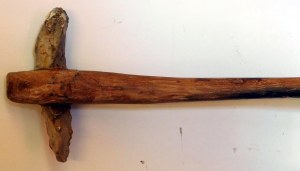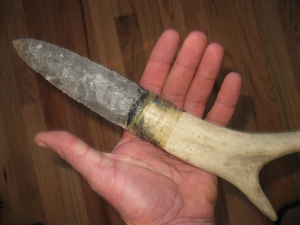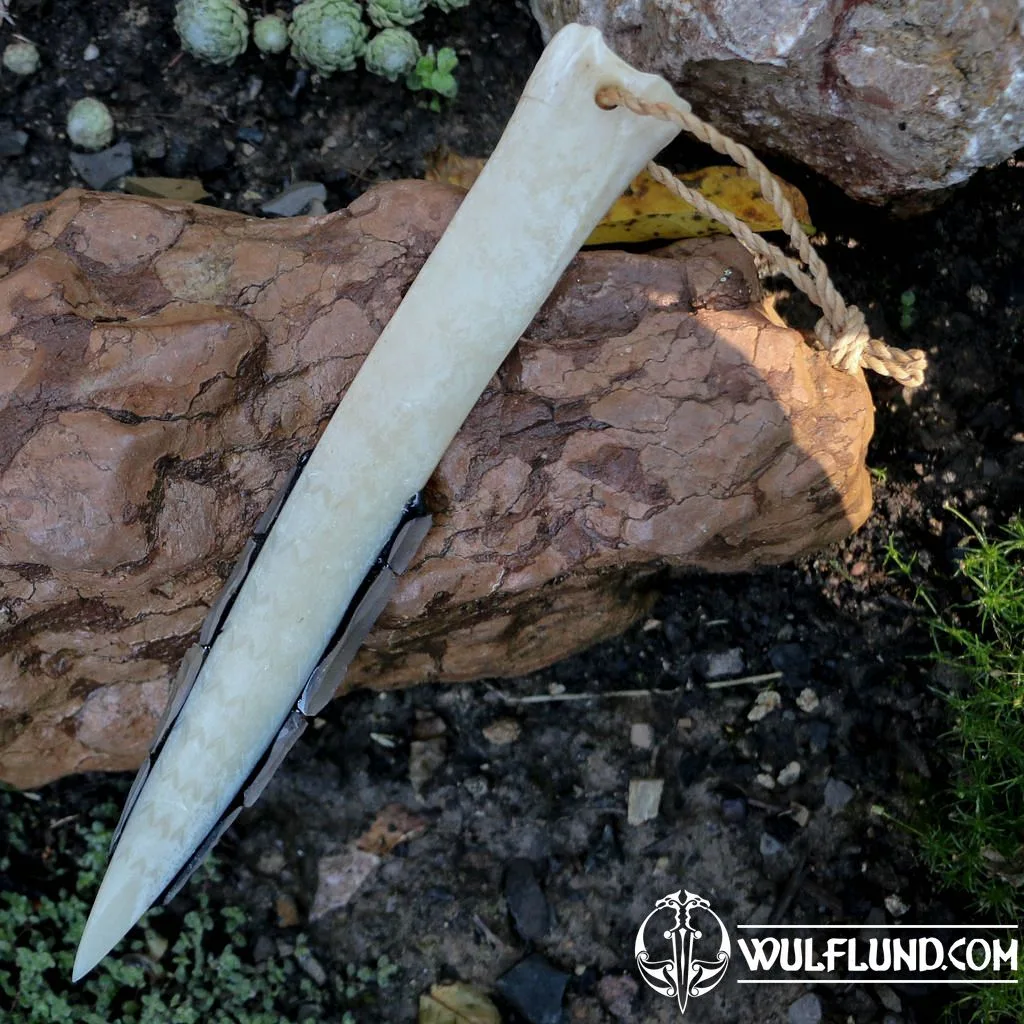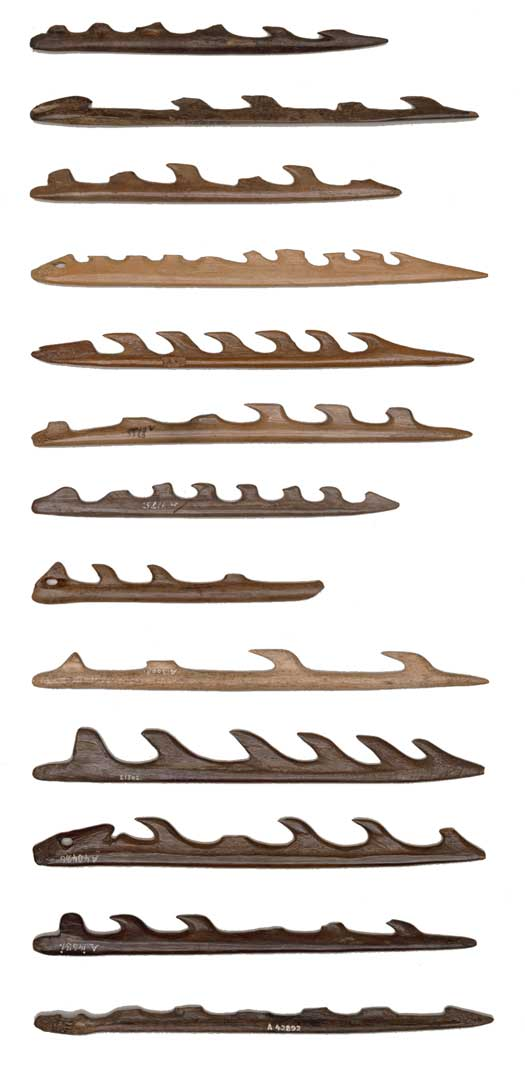
[Mesolithic Neathar] Technology
by Cab DavidsonMesolithic Neathar
Occasionally overlooked by outside observers, and mischaracterised either as neolithic or paleolithic peoples, the mesolithic Neathar are a distinct set of tribes identifiable by their lifestyles and tools. While the paleolithic peoples rely on a mix of foraged plants and hunted meat and fish, the
Materials
Mesolithic toolmakers make use of stone, wood, hide, antler, bone, and other materials available in their environment in an essentially chemically untransformed way (with the exception of pottery, which they are able to form and fire in a bewildering range of forms). The range of materials used by mesolithic peoples is not significantly greater, but with greater emphasis on settlement and specialisation the availability of quality stone for working into tools allows for a quite different focus in how to construct tools and weapons. The use of microliths, small stone shards cut and mounted together for greater effect, is an example of this.
Weapons
Axes
Axes fashioned from knapped flint and other stones that can be fractured to create an edge are made into a wider range of tools and weapons than paleolithic Neathar, with axe heads made for specific functions such as cutting down trees, working wood (adzes), and even picks, with the level of workmanship being related to function. Picks used for mining flint, for example, tend to break frequently, so are rarely worked to a high degree, whereas adzes needing to have a clean, straight edge require more work to construct. Axe heads tend to be heavier than among paleolithic neathar, and are fitted more precisely into worked-wooden hafts, somewhat cushioning the wielder from the impact of using the axe and allowing greater force be brought.

Mesolithic Pick - source Buried in time – Mesolithic picks and ‘tranchet axes’
Daggers
Mesolithic neathar daggers can, rarely, be copper (like neolithic neathar) but these tend towards being very high status and are often status symbols rather than the practical tools that the paleolithic neathar view them as. Stone daggers are more common, and come in several different forms.
While daggers entirely knapped from stone are known, more common are handled daggers, with the handle providing both comfort while using the blade and improved grip. Glues made from tree sap or animal collagen can be used affix fully tanged blades.

Handled mesolithic dagger. Source: Mesolithic Danish Flint Knife
Greater access to flint from more organised mining allows mesolithic neathar to produce daggers using narrow flakes affixed to bone, wood or antler bodies. Such tools can be rapidly repaired by affixing fresh flakes where others have been lost.

Source Mesolithic dagger - replica
Spears, harpoons and javelins
It is in the production of ranged weapons that the mesolithic neathar most excel. Using microliths affixed to the end of wooden shafts they produce an array of specialised weapons for different purposes. Razor sharp shards glued to shafts typically using birch tar can form spears, harpoons or javelins with a range of purposes, allowing
Image
Source: Dr. James Dilley
Bone and antler may be carved to make complex harpoon tips that are ideal for fishing, hunting walruses and seals, and indeed for hunting larger game on land. Such harpoons are related to spears, but have their own weapon mastery.

Antler and bone speartips crafted for different animal prey. Source: National Museum of Denmark
While harpoons are preferred for the hunt, in war most prefer spears and javelins. These are typically made with knapped flint spearheads, made for strength and resistance rather than for embedding in foes.
Maces and Clubs
Another area in which the mesolithic Neathar show great advances over paleolithic Neathar is in mace and club heads. Many mace heads are smoothed and rounded, giving more resilient weapons without a tendency to break. While the full extent of polished stone weapons is better exemplified in by the craftsmanship of the neolithic Neathar, such polishing techniques are also known to the mesolithic tribes. The great advantage of such weapons is that they do not wear as rapidly in use as other stone weapons, not requiring maintenance after 10 rounds of use like other stone weapons.

Mesolithic mace head. Source: Mesolithic stone mace
Bows
Like the paleolithic neathar, the mesolithic folk have an excellent understanding of bows, and likewise while their bows are roughly the size of longbows they have a similar range to shortbows. But the mesolithic neathar archer does have certain advantages, mostly in the form of the arrowheads they craft.
Arrowheads are manufactured from bone, antler and ivroy, as well as stone. And the mesolithic arrowsmith has the capacity to make a bewildering array of arrowheads. While such materials will never wear as well as the metal arrowheads of other cultures, they can be crafted for specific purposes, including fowling, hunting large game, and war. Arrowheads may be constructed from razor-sharp microliths through to barbed antler.
In game terms this means that arrowheads are available with which it is harder to hit (-1 or -2 to hit) but which do increased damage (+1 or +2) to unarmoured targets.
Slings
Mesolithic hunters and warriors make liberal use of slings. With a greater understanding both of textiles and stonecrafting their slings and projectiles are of excellent quality, the equivalent of those of any other culture, and resultantly the use of slings both to drive and kill prey in the hunt is very common.
Boomerangs
Many mesolithic neathar tribes are excellent boomerang hunters, making well balanced wooden boomerangs the equal of any other. While the more highly polished bone and antler boomerangs of the paleolithic peoples are rarer, the boomerang is viewed a valuable weapon for hunting small game.
Bolas and Net
Bolas are used by tribes of mesolithic Neathar to capture prey, but with a greater understanding of the use of textiles than the paleolithic peoples the mesolithic peoples also employ nets in hunting, as well as in fish traps. Such nets require significant work to produce, and as such are used with care, but are a commonly used weapon both in hunting and war.
Blowguns
The advanced used of microloiths allows the rapid production of sharp tipped blowgun darts, which the mesolithic tribes use to great effect. Certain tribes have also mastered the extraction of poisons from various plant sources, and employ both short and